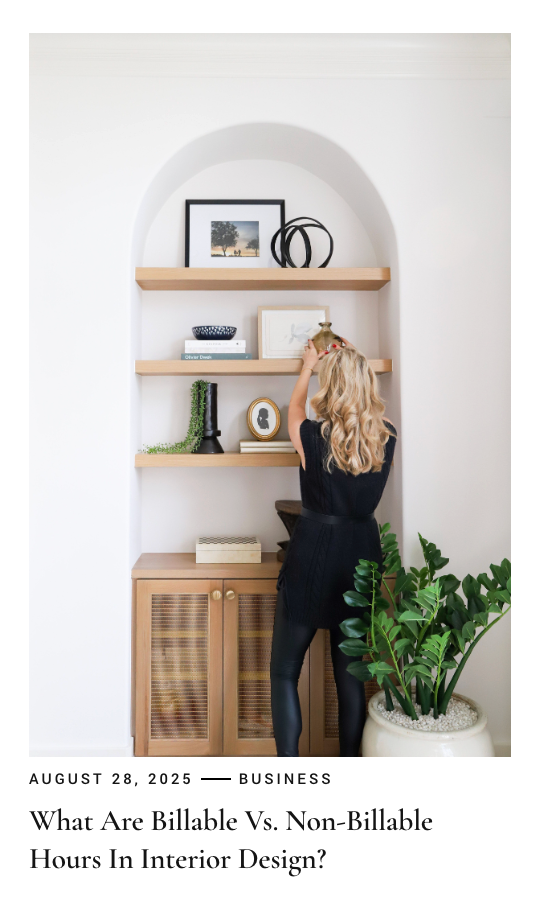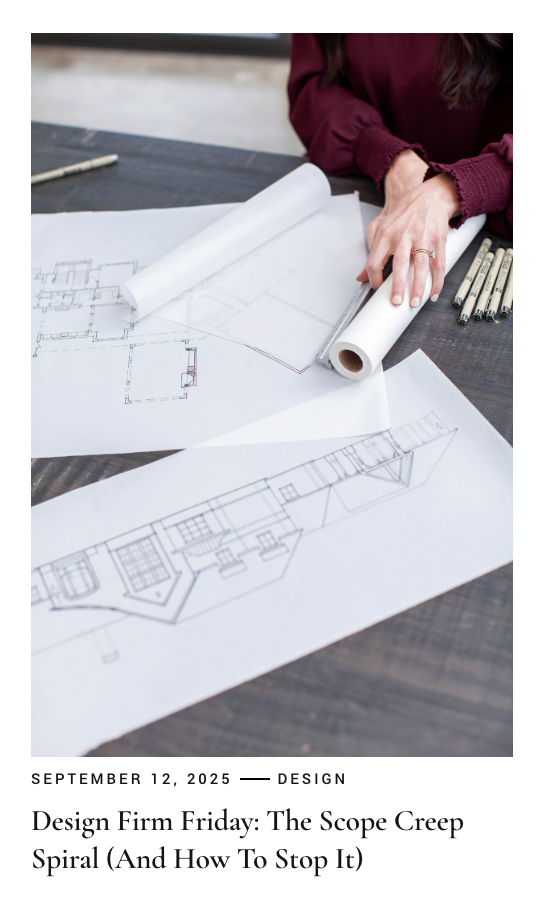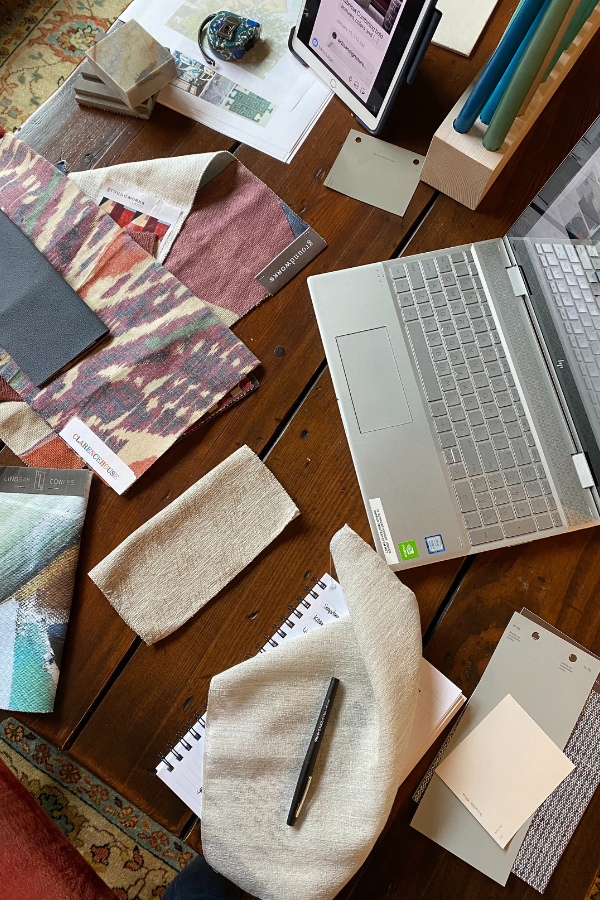
What’s the Easiest Way to Track Billable Hours in a Small Design Firm?
Summary
Small design firms often skip billing appropriately until missed hours drain profits. The fix is to keep things simple: define billable vs. non-billable clearly, use lightweight tools, log hours in real time, and connect time tracking directly to invoicing. Regular reviews help you catch scope creep before it becomes a problem, and over time, the data reveals what’s truly profitable and what’s not.
Reflection Questions
Where in our current workflow do we lose track of time — and how much might that be costing us each month?
Are we consistently differentiating between billable and non-billable tasks, or do we blur the lines until it hurts profitability?
How could we reframe time tracking internally so the team sees it as a tool for clarity and better pricing, not as a surveillance system?
Journal Prompt
Think about the last project that felt “busier” than the invoice reflected. What tasks or hours slipped through the cracks? Write about how more consistent, real-time tracking might have changed that outcome — from project decisions and client conversations to final profitability. How might a tighter feedback loop influence the way you price, plan, and protect your team’s time in the future?
Time and money are practically the same currency in design (any creative industry, really). And yet, plenty of small firms treat time tracking like a chore; it’s something they’ll “get to later” when things calm down. The problem is, “later” pretty much never happens, and those untracked hours start eating into profits. You don’t see the little bites it takes at first. But you feel it when the project wraps and your take-home is much lower than you expected.
There’s good news, though. Tracking time doesn’t have to be complicated or bureaucratic. In fact, the simpler you make it, the more likely your team will actually do it (consistently). The trick here is understanding what counts (no pun intended), setting up a system that fits the size of your studio, and connecting the dots between hours, invoices, and outcomes.
So First, Understand What Counts as Billable vs. Non-Billable
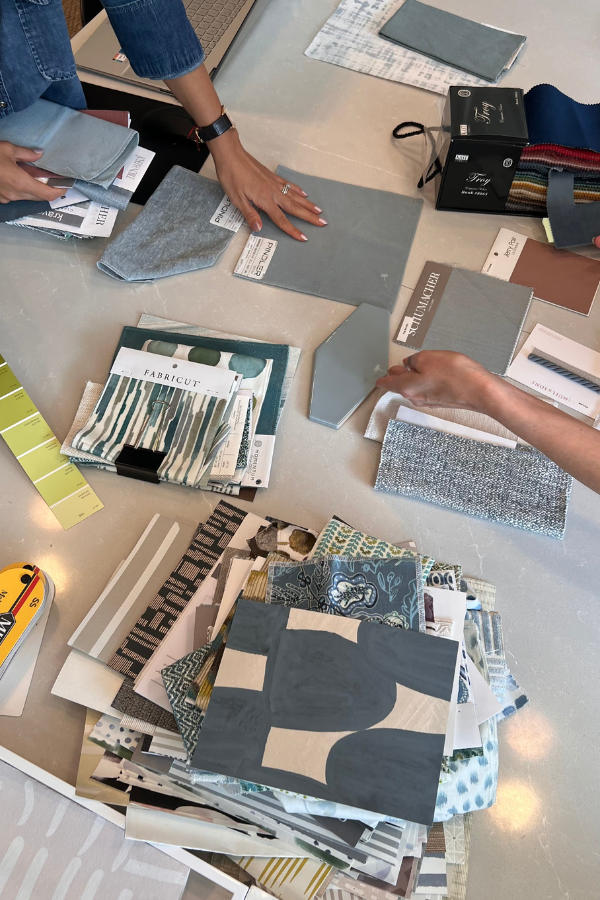
It’s worth pausing here because many teams never draw a clear line. Billable hours are the time tied directly to delivering the scope a client hired you for: design concepts, drawings, sourcing, site visits, procurement logistics. Anything that would reasonably show up on a project timeline probably belongs here.
Non-billable hours are everything else. Internal team meetings. Marketing tasks. Business development calls. Administrative overhead. All important to running a firm, but not something a client expects to pay for. You can learn more about this in the article linked below.
It’s not always black and white, of course. That “quick” call to walk a client through options might be billable the first time and non-billable the fifth. The key is to be intentional about how you categorize things and consistent about how you record them. Even a basic distinction like billable vs. non-billable gives you far more visibility than lumping everything into “work.”
To Actually Track Your Hours…
Keep It Simple (Don’t Overcomplicate for Small Teams)

A lot of small studios overbuild their time-tracking systems. They introduce complicated codes, detailed sub-categories, and multi-step processes that feel more like filling out a tax return than logging hours. That’s a mistake. Complexity kills adoption.
A simple setup (i.e., a few broad categories and an easy input method) will always outperform an intricate system nobody remembers to use. Try something lightweight to start: design, admin, client communication, procurement. You can add detail later if you find you need it, but the first step is just building the habit.
It’s also worth clarifying expectations with your team. Logging time shouldn’t feel like busywork or surveillance. Frame it as a tool for understanding where energy goes, not for tracking bathroom breaks.
Use Cloud-Based Time Tracking Tools (Harvest, Toggl, Clockify)

There’s no shortage of software that promises to solve time tracking, but for small design firms, the best tools are the ones that don’t get in the way. Harvest, Toggl, and Clockify are popular for a reason: they’re lightweight, browser-based, and simple to learn. Starting and stopping a timer takes a few clicks. Most also integrate with project management tools and invoicing systems, so you don’t have to duplicate work.
One underrated perk of cloud tools is visibility. Because everything updates in real time, you can see how hours are stacking up on a project before you’re deep underwater. That early insight is often enough to trigger an important conversation (maybe a scope adjustment, maybe a reallocation of tasks) before the budget’s blown.
Fuel your creative fire & be a part of a supportive community that values how you love to live.
subscribe to our newsletter
*please check your Spam folder for the latest DesignDash Magazine issue immediately after subscription
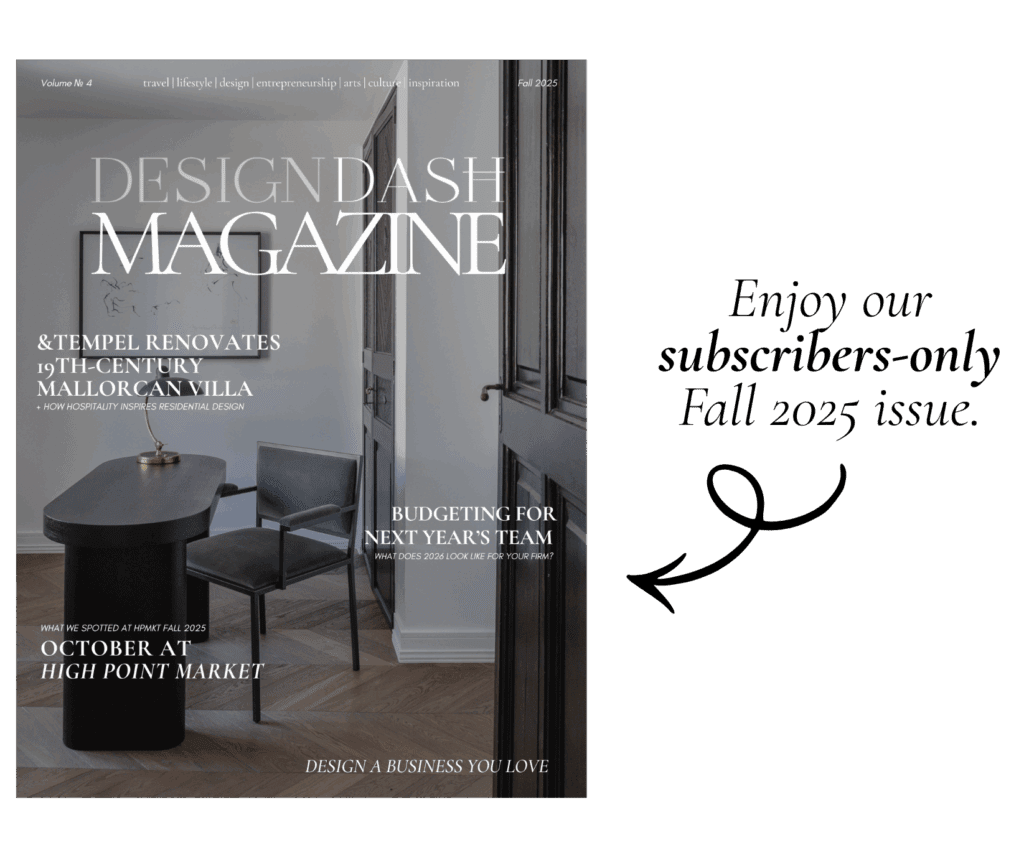
Automate Reports for Weekly Review
Time tracking is only useful if you actually look at the data. A weekly report is an easy habit that pays off quickly. Most tools can generate it automatically and deliver it straight to your inbox: total hours per project, billable vs. non-billable breakdown, percentage of budget used.
Even if you do nothing else with that report, reading it regularly keeps you tuned in to the business side of your work. Over time, patterns emerge. Maybe one client’s projects consistently chew up extra admin hours. Maybe design time is steady, but sourcing always runs long. Those insights are gold; they help you price more accurately and spot inefficiencies before they become structural.
Encourage Staff to Log Hours in Real Time, Not Days Later

Memory is a terrible accountant. Ask someone on Thursday what they worked on Monday morning and they’ll probably guess. Real-time logging solves that. Whether it’s hitting “start” on a timer or jotting a quick note as tasks change, the closer the log is to the work, the more accurate it’ll be.
If your team resists, consider why. Sometimes it’s a workflow issue; the tool’s clunky, or people aren’t sure what counts. Sometimes it’s cultural; they think tracking is a way of policing productivity. A short conversation can usually fix both. And once real-time logging becomes habit, you’ll be amazed how much cleaner your data looks.
Tie Tracking Directly to Invoicing

This is where a lot of firms lose money without realizing it. Hours that never make it from the timesheet to the invoice are essentially free work. It happens more often than you’d think; someone forgets to export, a few stray tasks get left out, or the invoicing software doesn’t sync with the time tracker.
Connecting the two processes, even with a simple integration or manual review step, closes that gap. It also strengthens your position if a client questions a charge. You’re not relying on vague recollection; you have a timestamped record of exactly what was done and when.
Review Regularly to Spot Scope Creep
Scope creep rarely pops up as one “big moment.” It’s usually a slow accumulation of “small” requests and extra calls that don’t feel like much at the time. But they add up. Weekly or biweekly reviews of time logs make those patterns obvious early.
If you notice non-billable hours ballooning, that might signal a project is slipping outside its original bounds. Maybe the client needs a clearer understanding of what’s included. Maybe you need to revisit the agreement. Either way, you can act while there’s still time to correct course instead of swallowing the overage at the end.
Remember. Tracking Isn’t Micromanaging. You’re Seeking Clarity.
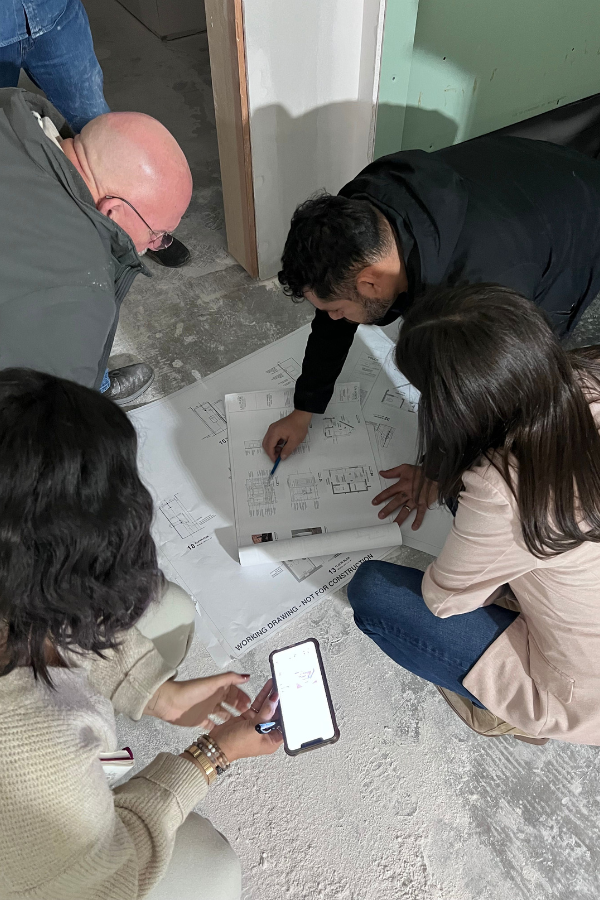
Some designers resist time tracking because it feels too corporate, too mechanical. But that misses the point. Tracking hours shouldn’t involve you hovering over every task or squeezing more productivity out of the team. You’re seeking clarity and visibility; you want to know where your effort goes and whether the math behind your projects actually works.
And once you have that visibility, you can make better decisions. You’ll know which services are truly profitable, which clients demand more time than they pay for, and where your processes need tightening. That clarity is what keeps a small studio profitable as it grows. Without it, you’re flying blind and guessing is a costly business model.
Bottom line: every design firm, no matter how small, benefits from knowing how time is spent. Keep the system simple, tie it directly to the financial side of the business, and treat it as a source of insight rather than surveillance. Do that consistently, and tracking stops being a chore.
Written by the DesignDash Editorial Team
Our contributors include experienced designers, firm owners, design writers, and other industry professionals. If you’re interested in submitting your work or collaborating, please reach out to our Editor-in-Chief at editor@designdash.com.



